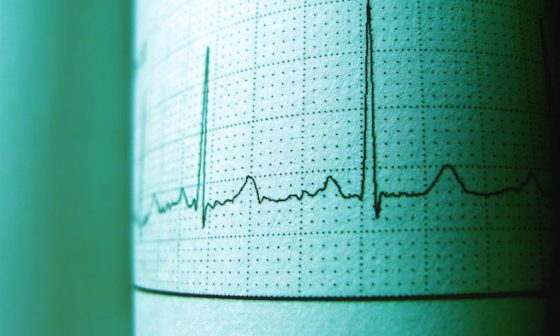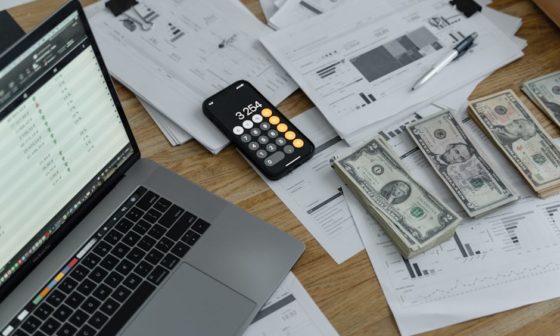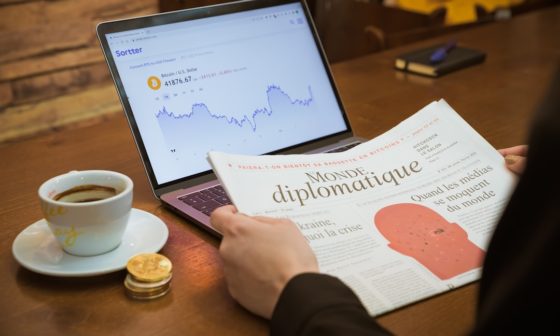Quantitative trading usually referred to simply as quants trading, is the practice of identifying and capitalizing on potential trading strategies opportunities by the application of computer algorithms and programs, which may be based on basic or complicated mathematical models. Rear quant buying and selling also includes doing a research study on previous information with the objective of identifying potential profit possibilities.
1. Quants Trading on an institutional level
Quants trading is extensively utilized on both the institutional and individual levels for automated trading, machine learning, asymmetric trading, and computerized trading. It is usual practice to refer to traders who engage in statistical analysis and the transactions involving that are directly related to it as “quants” or “quant traders.”
2. Requirement for the employers
Quant trading also requires conducting research on previous data in order to discover potential profit chances. Over the past 20 years, professions traditionally held by traders in reputable trading organizations have increasingly been filled by individuals with advanced degrees such as master’s degrees in business administration and doctorates in fields such as computer science and neural networks. Employers can range from small-sized local trading enterprises to the brokerage firms of multinational financial institutions, hedge fund managers, or premium trading firms. Other types of employers include firms that specialize in arbitrage trading.
How Has the Quantitative Trading System Progressed Through the Years?
In the past, financial markets were based on physical floors, and traders and financial market makers interacted with one another, reached a consensus on a commodity, pricing, and volume, and then physically settled their trades using paper. The loud and clear voice, as well as a solid robust frame, were stated at cost for dealing with job applicants because these qualities rendered them attractive on the trading desk. These qualifications were among others that were considered an asset.
1. Financial market Dependence
The floors began to empty out as a result of the financial markets becoming digital and expanding their reach globally. Dealers who had nothing to contribute except a loud voice started to go, allowing space for techies who were knowledgeable about computers. Electronic financial markets provided the chance for massive expansion, loads of trade data, new assets, and securities, as well as data gathering, investigation, research, and algorithmic trading system development.
2. Swarm of advanced degree holders
In the last two decades, professions traditionally held by traders in reputable trading organizations have increasingly been filled by individuals with advanced degrees such as master’s degrees in business administration and doctorates in fields such as computer science and neural networks.
The Characteristics of a Quantitative Analyst
A quantitative analyst may find employment with a tiny, mid-size, or massive trading firm, receiving a competitive salary in addition to big bonus payouts, which are based on the trading profits created by the firm. Employers can range from small-sized local quantitative trading systems to the quantitative trading models of multinational financial institutions, hedge funds, or discount trading firms. Other types of employers include firms that specialize in arbitrage trading.
1. Necessities for a quantitative trader
Obtaining a position as a trader at one of today’s established companies typically necessitates possessing a specialized master’s degree in a quantitative field (such as an MBA, Ph.D., or CFA), unless the applicant is an experienced trader with a track record of successful employment. Other younger quants with less experience can begin their careers in smaller organizations, or they can begin as basic analyzers and work their way up the ladder over a longer period of time, despite the fact that this is a fiercely competitive field.
2. Background required for quants
Quants should have a foundation in not only financial, mathematical, and programming skills; however, they should also have a background in the following abilities and fields:
· Compatibility of knowledge and experience with the use of various types of computers
· Working familiarity with one or more programming languages, acquired via hands-on experience.
· Familiarity with the building and customization of trading systems, as well as experience with the various automation options
· A functional understanding of data feeds and the applications for which they are used.
· In addition to analysis skills, capabilities in data mining and research are also desirable.
· temperament befitting a trader and the aptitude to take risks
· A mentality that is flexible and accommodating toward innovation in order to persistently find new avenues and strategies.
Quantitative Analyst Methods
Quants put their own methods to work on real data, such as price quotations and information, and the results can be rather interesting. In order for them to perform their tasks properly, it is important for them to have a solid understanding of any linked systems that supply financial market data and content.
1. Tools used in quantitative trading
Quantitative traders can, in most circumstances, rely on the following instruments:
Systems that are used to gather financial market data, such as the Bloomberg data terminal, have the required technical and quantitative analytical tools available to them so that they can fit into their trading streams (like Bollinger bands, charts, etc.)
Compatible Information systems
The following are examples of information systems that are compatible with many programming languages: Languages such as Perl, C++, Java, and Python are utilized by the vast majority of members of the trader community. The availability of historical data and/or real-time data, so that they can do a back test on the identified strategies they have chosen, is necessary. The most prevalent approach for providing automatic access to brokerage and trading accounts is known as direct financial market access (DMA for short).
Quantitative Trading Strategies
The execution of trading strategies is done by the application of quantitative methodologies and algorithms in quantitative trading. This has a wide variety of applications; one common scenario would be a trader utilizing a mathematical model to formulate an opinion on what the value of an asset “should” be prior to engaging in a transaction involving that asset. These kinds of models are intended to make use of knowledge that the market might be lacking, such as what happens to a company or an industry when interest rates move in a specific manner. However, this is simply one type of quantitative trading, and hedge funds and investment banks are the institutions that typically engage in this type of trading.
The process of providing liquidity to the market is referred to as “market making,” and quantitative trading is employed to facilitate this process. Instead of capitalizing on inequalities in the distribution of information, the techniques focus on streamlining the purchasing and selling processes for participants. This ensures that the markets continue to function normally, which is especially important in times of high volatility or when the market is in a very small size.
Quantitative trading techniques
In addition, performs background work in the science department and offers trading advice to employees in the financial marketing sector. The work of a quantitative operator is a process that is nonstop and demanding, and it requires long hours of effort. Trading in the modern day appears to have evolved into a competition between computers, where the only contribution a human trader can make is to create computer programs that are intelligent enough to perform better in the financial market than those built by equivalents. Since there are fewer prospects for a profit with each passing day, increased levels of efficiency are required when the financial market as a whole becomes increasingly automated. Inside the U.S., the cities of Chicago and New York as well as other locations that are popular destinations for hedge funds, such as Boston, Massachusetts, and Stamford, Connecticut, have the highest concentration of quant trading jobs. Quantitative traders may have the opportunity to obtain employment in a variety of global financial cities, including London, Hong Kong, Singapore, Tokyo, and Sydney, amongst others.
The Crux of the Matter
The job of a quant trader and the rewards that come with it appear to be very lucrative; but, in order to qualify for this highly competitive industry, one needs to have a variety of talents, knowledge, and temperament. Quantitative traders often have a modest success record, and after a few years, due to fatigue, many of them diversify their portfolios or move on to other streams of income. In order to be effective as a quant, one needs, in addition to all of the essential infrastructure, skills, and knowledge, to have the appropriate attitude.
How Does One Get Started in the Field of Quantitative Analysis?
The majority of businesses insist that applicants possess at least a master’s degree, and a doctorate is typically preferred, in a statistical field (math, economics, finance, or statistics). Master’s degrees in corporate finance or computational finance are two possible alternative entrance points for jobs as quantitative traders. If you hold an MBA degree, in addition to some substantial experience working in the real world, you will probably also require a very strong computational or math skill set in fact necessary to be appointed as a quant trader. In addition, you will likely need a very strong skill set in either of these areas.
1. Important soft skills for quantitative traders
In addition to the educational qualifications they must meet, quantitative traders must also have advanced software skills. Applications that require high-frequency trading often make use of C++, and offline statistical analysis is typically carried out using MATLAB, SAS, S-PLUS, or another package of a comparable nature. Knowledge of pricing can also be incorporated into trading tools developed using Java, .NET, or VBA; these tools are frequently coupled with Excel. Mathematical analysis and quantitative methods are becoming more widely used to describe the contemporary environment. The development of quantitative trading has made smooth-talking Wall Street brokers obsolete. Talent from subjects as varied as mathematics, statistics, computer science, programming, economics, and more may be found in today’s financial sector.
2. Strategy Making
First and first in each and any quantitative trading approach is the formulation of a Plan of Action Study. The research process includes finding a strategy, assessing whether it complements other tactics you may be implementing, gathering data to test the plan, and optimizing it for higher yields and/or lower risk. To use the method profitably as a “retail” trader, you must first determine how much capital you will need to get started trading and how much your profits will be reduced by transaction fees. Contrary to popular belief, it is surprisingly simple to discover profitable strategies by exploring open sources. Academic journals are a common venue for the publication of theoretical trading results by financial theorists (albeit mostly gross transaction costs). To get a more in-depth look at the various strategies, you can read blogs specializing in quantitative finance. A number of the strategies employed by funds will be outlined in industry publications.
In light of the fact that “swarming the financial marketplace” may eventually make the technique ineffective, you may be wondering why people and businesses are so keen to talk about their successful approaches. The reason for this is that these people are famously secretive about the particular parameters and tuning procedures they’ve used. Such adjustments are what set apart a decent plan from a highly profitable one. If you want to come up with your own unique tactics, one good tactic is to look for similar procedures and then run your optimization procedure.
3. Mean-reverting strategy
The majority of your study will focus on mean-reversion and trend-following/momentum strategies. Traders can use a mean-reverting strategy to profit from the belief that all “series data” (such as the spread between two correlated assets) has a long-term mean and that all short-term departures from this mean will eventually reverse back to the long-term mean. Mean-reverting strategies take advantage of the belief that deviations from the long-term mean of “series data” (such as the spread between two or more important assets) will eventually be reversed. A momentum strategy seeks to take advantage of the human nature of investors and the institutional framework of huge funds by “riding” a trending financial market that is trending in one direction. A strategy or set of strategies can then be back-tested against historical financial market data to determine whether or not they have any chance of being profitable. This is when historical data and backtesting come in handy.
Which Part of Statistics Is Used the Most in Quantitative Work?
Quantitative trading relies heavily on certain facets of statistics, particularly regression theory and time-series analysis, as its fundamental building blocks. The quantitative analysis makes use of a variety of methods from the field of electronic engineering, including the Fourier analysis and the wavelet analysis. Because the majority of the statistical ideas you will need to comprehend to work in quant trading are considered to be of such a high level of complexity, they are not taught at the undergraduate level. Because of this, it is crucial to engage in more in-depth study in the field of statistics (namely Ph.D. coursework).
Which Programming Languages Are Necessary for Quants to Understand?
Trading platforms typically make use of C++ and Java as their primary programming languages. In addition to having a working knowledge of programs such as R, MATLAB, Stata, Python, and, to a lesser extent, Perl, quants frequently need to be able to write in C++.






